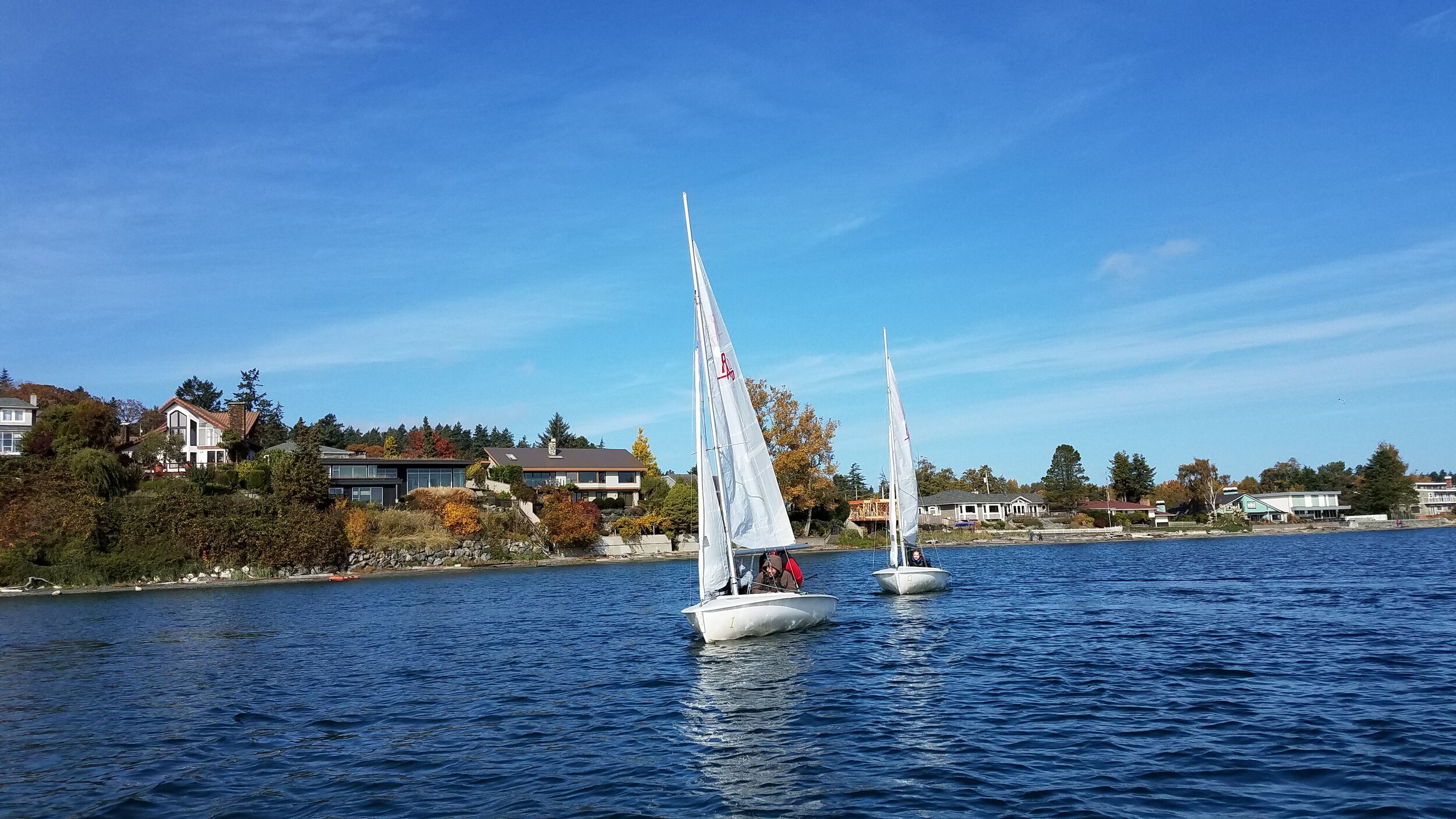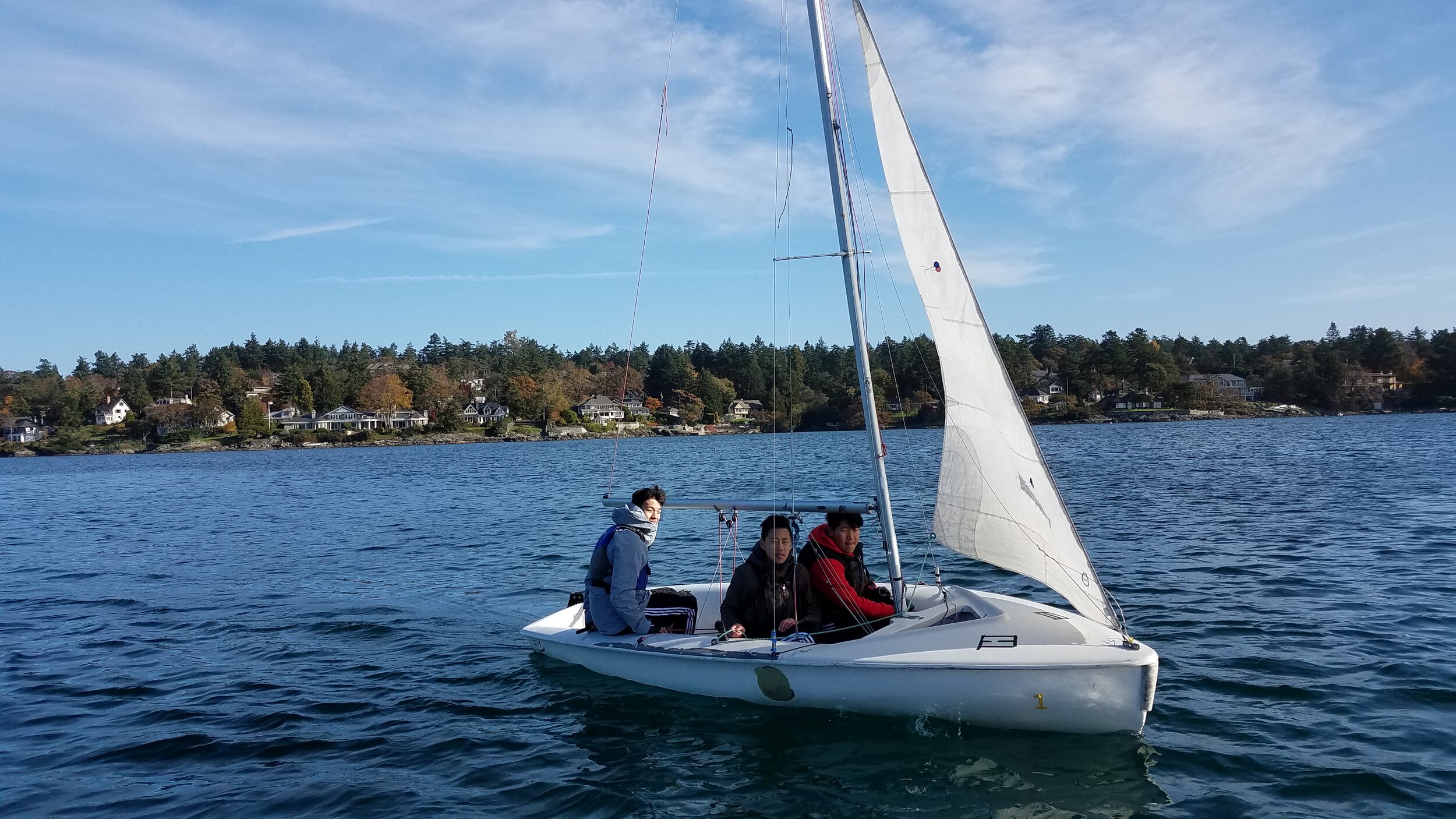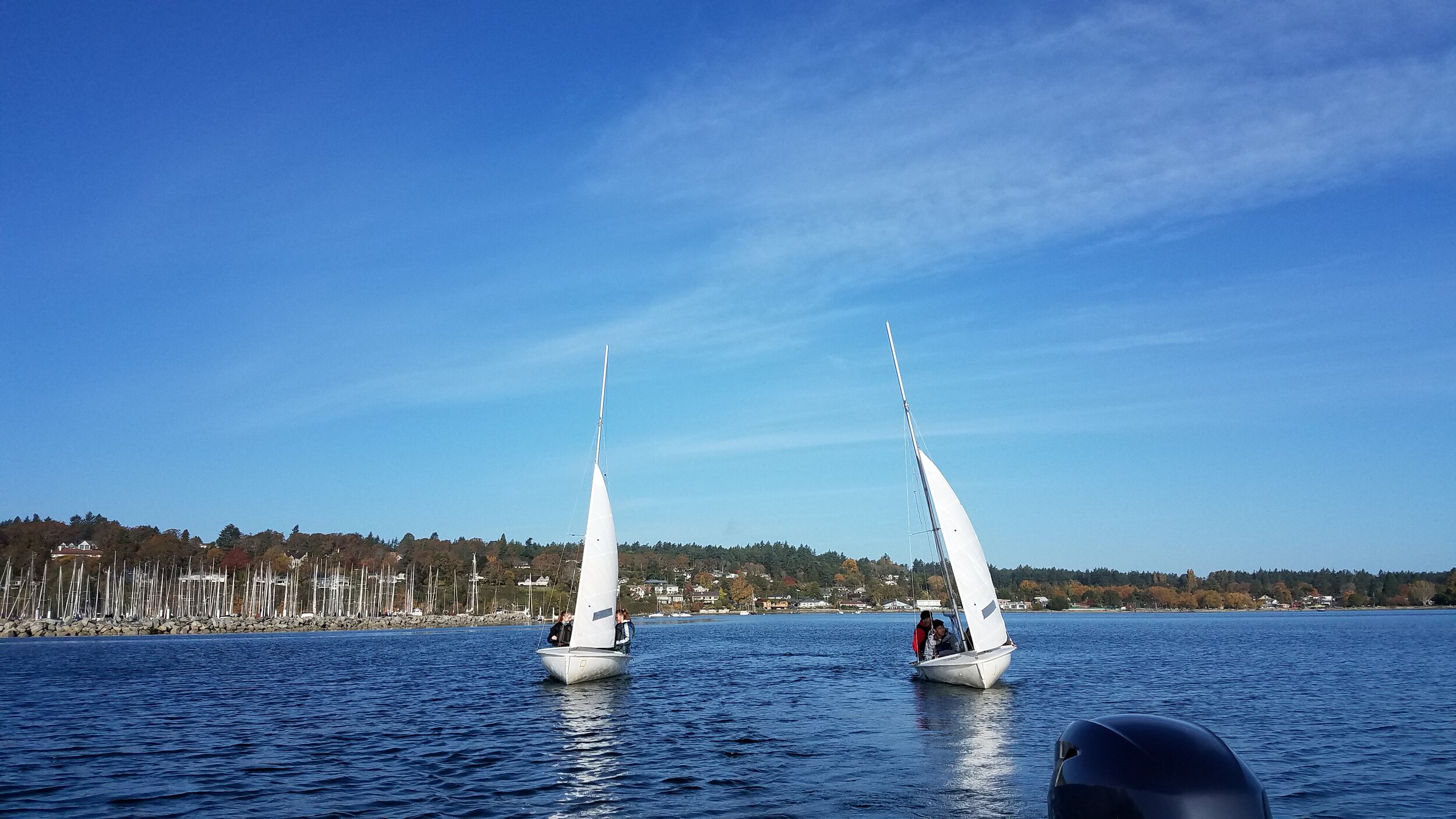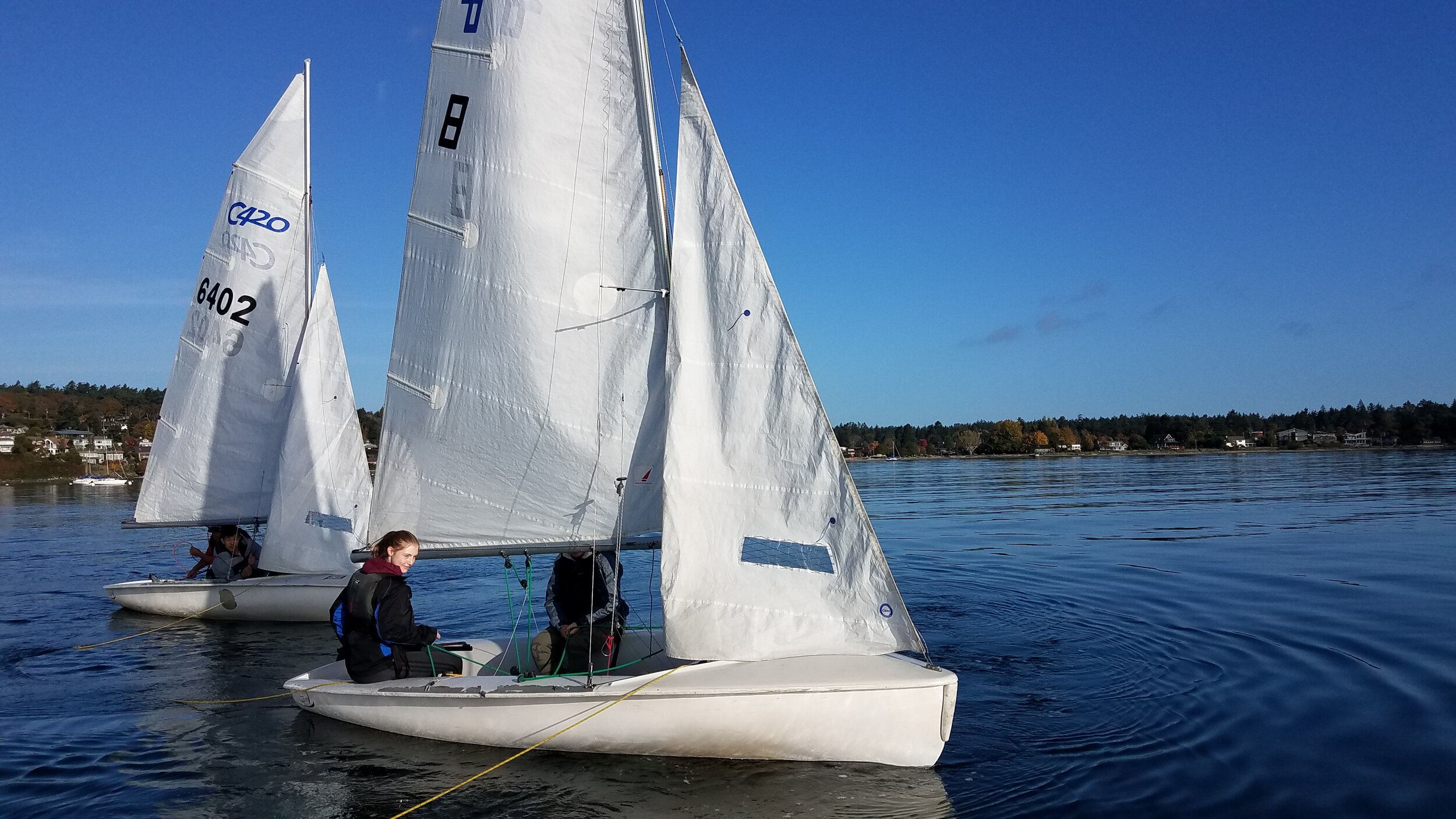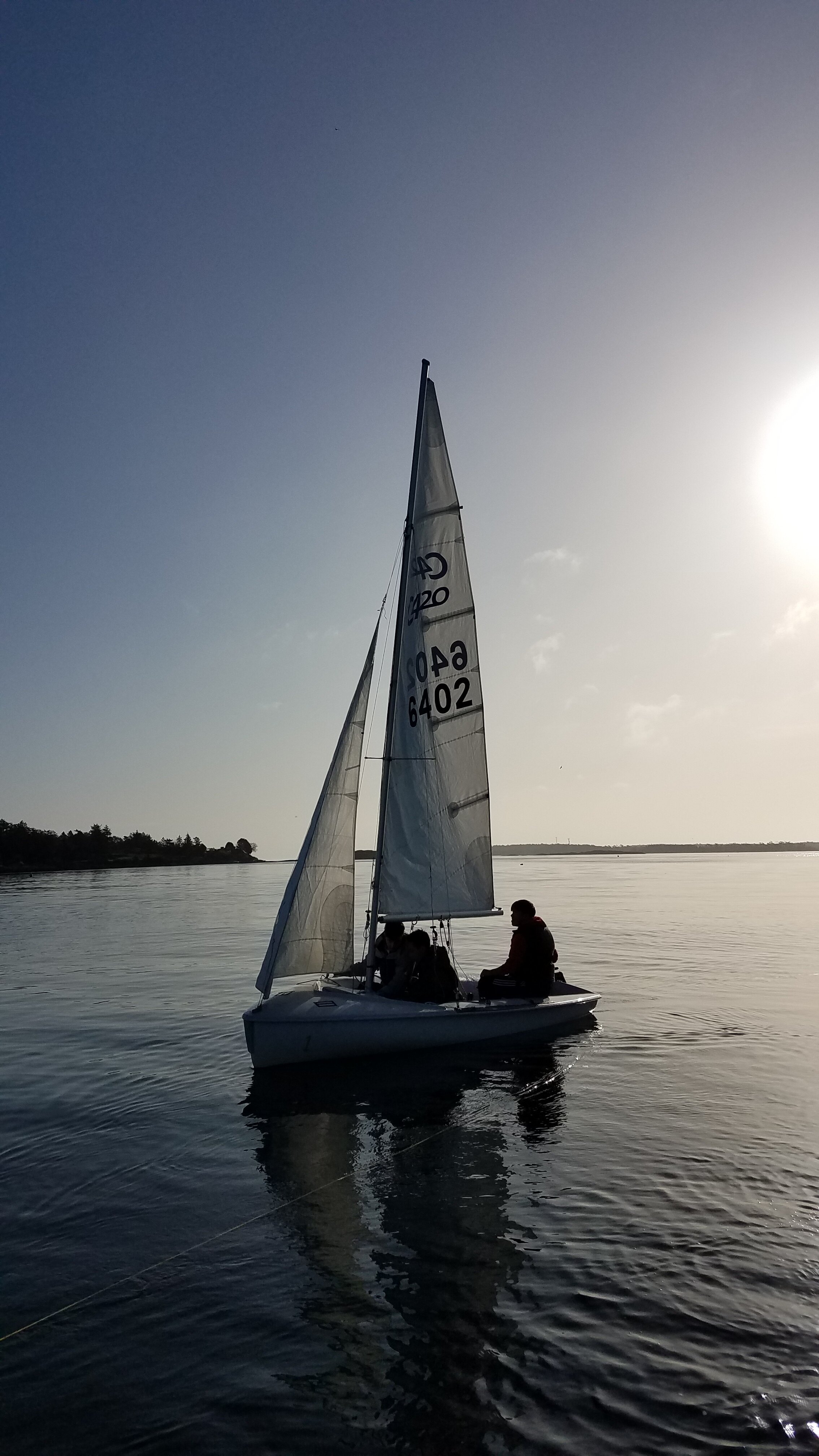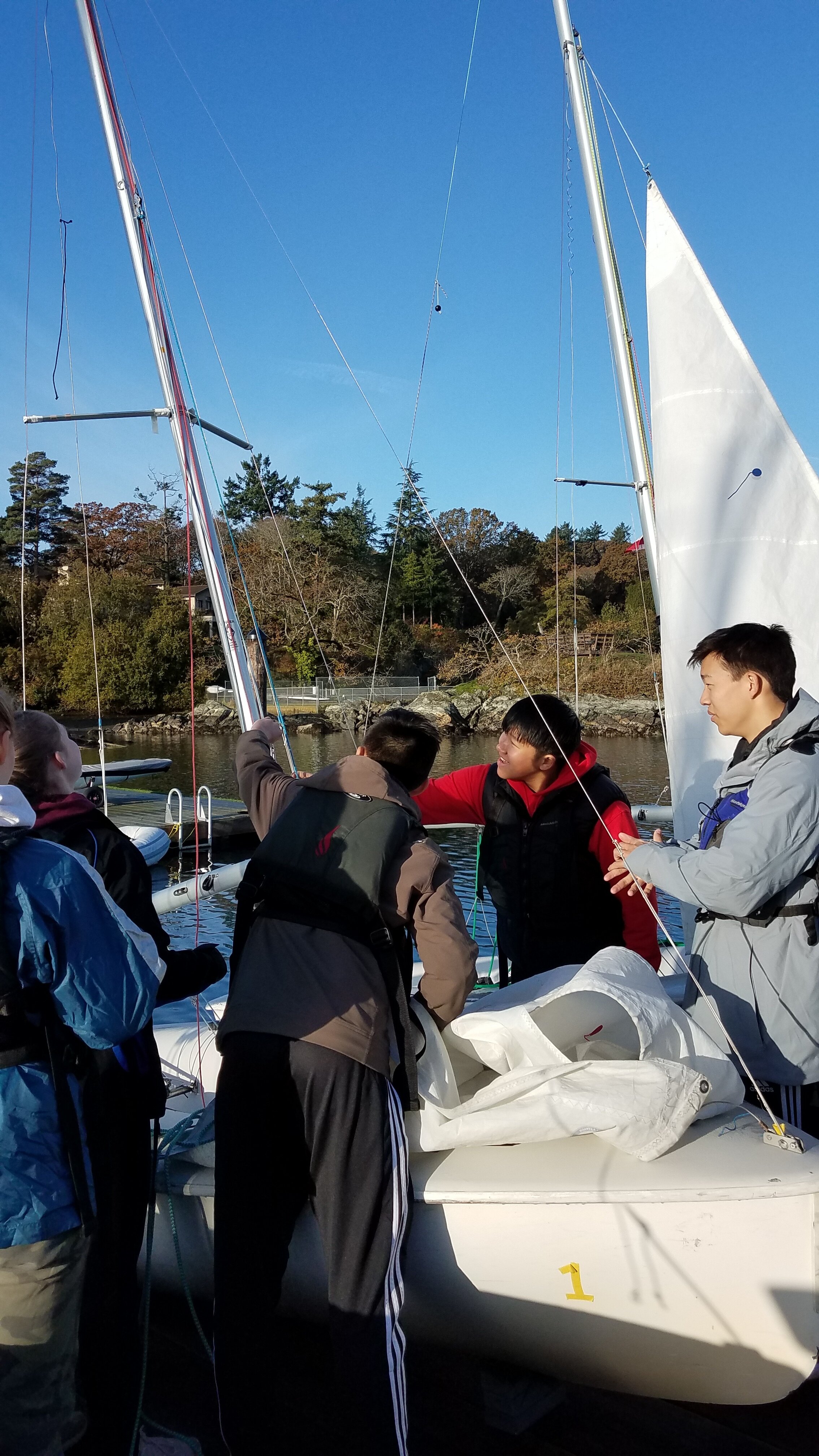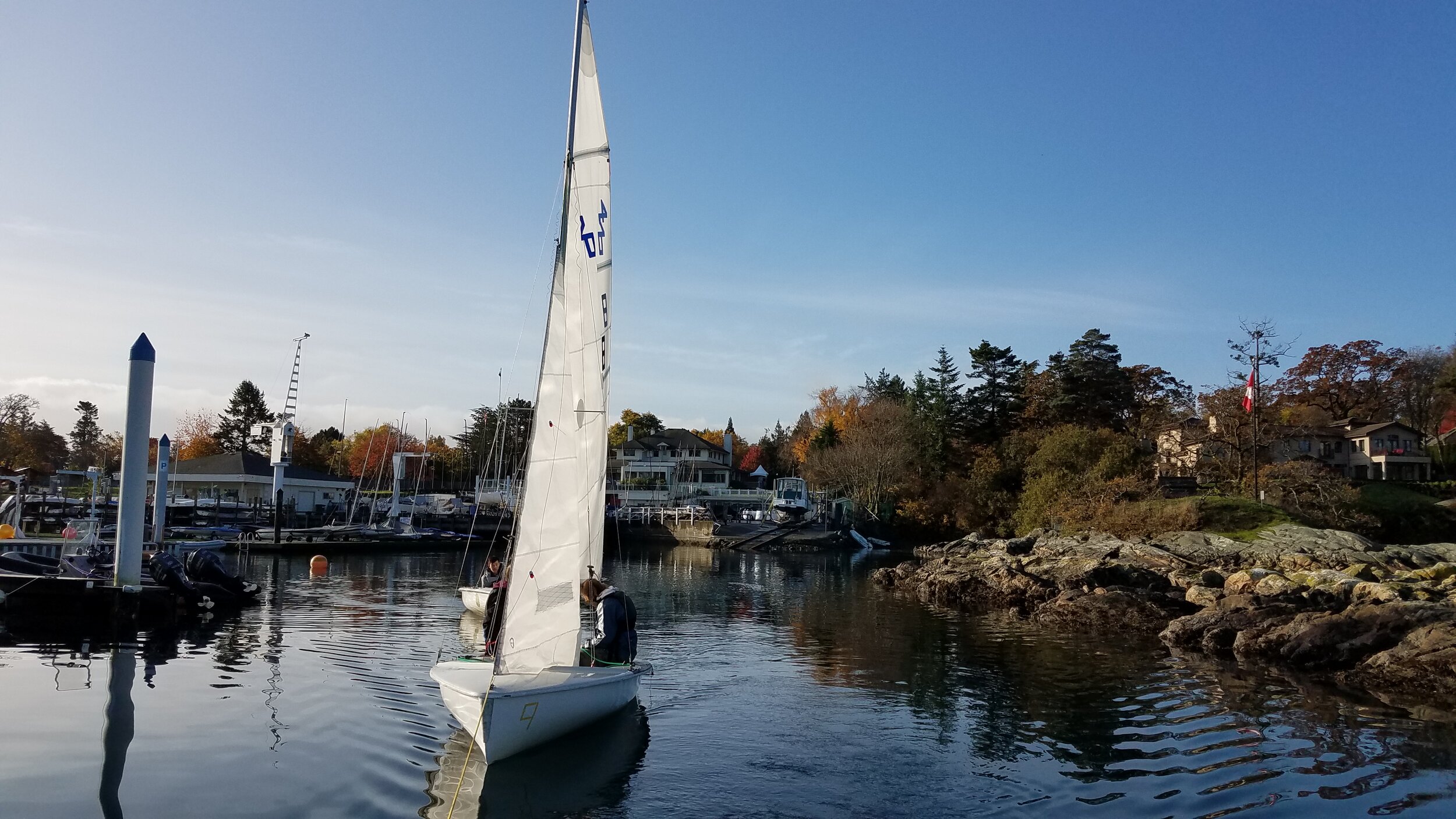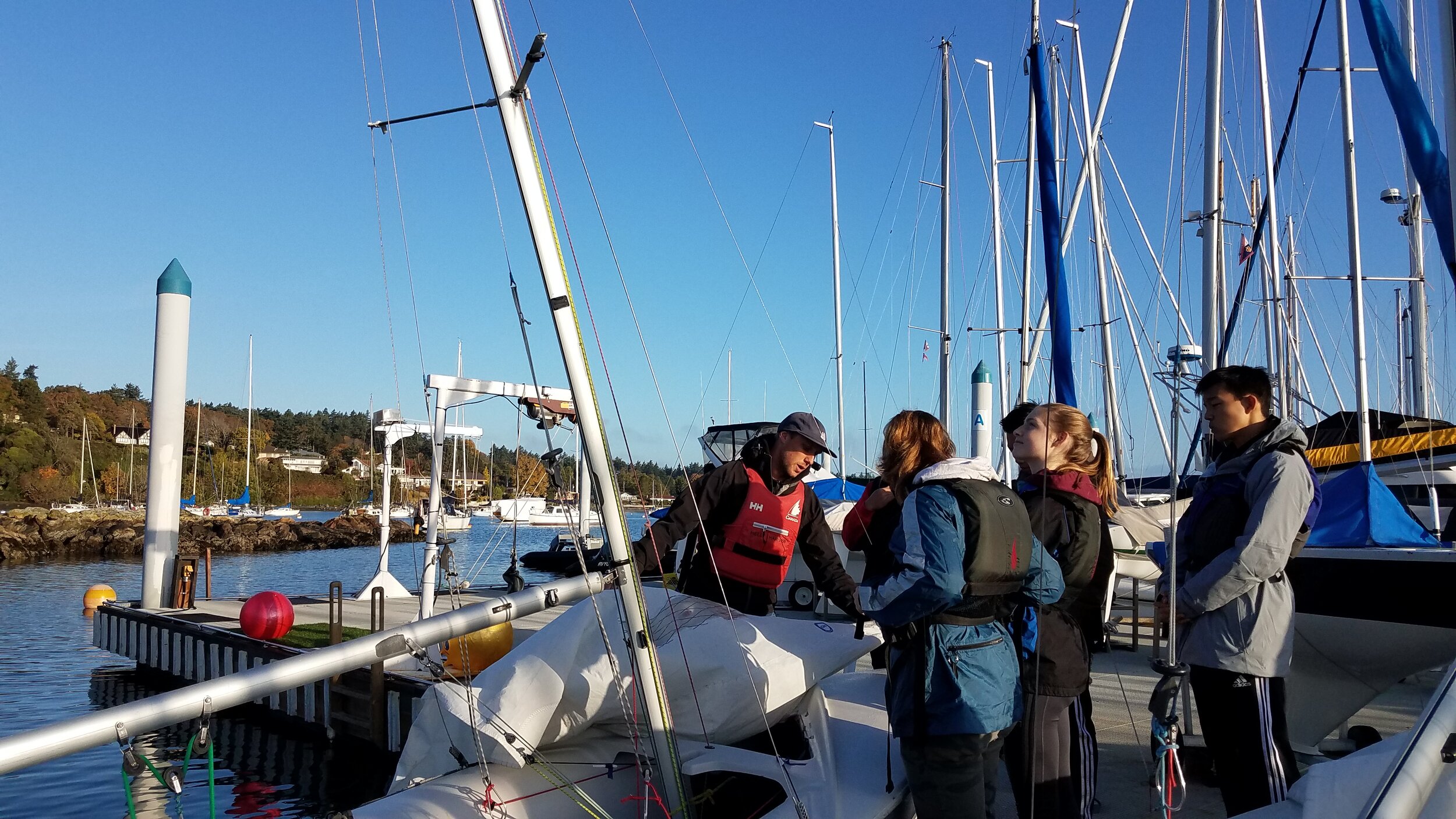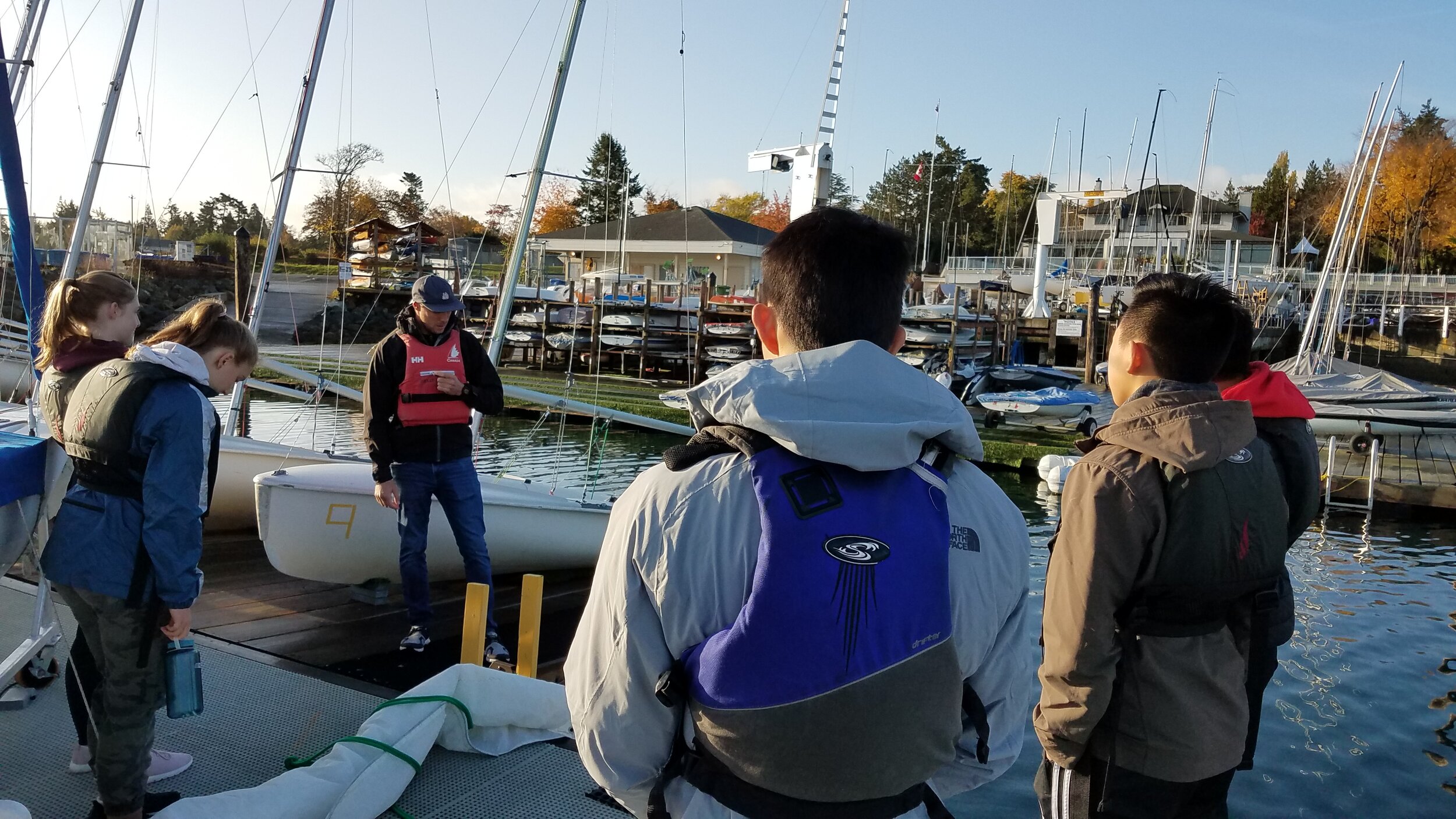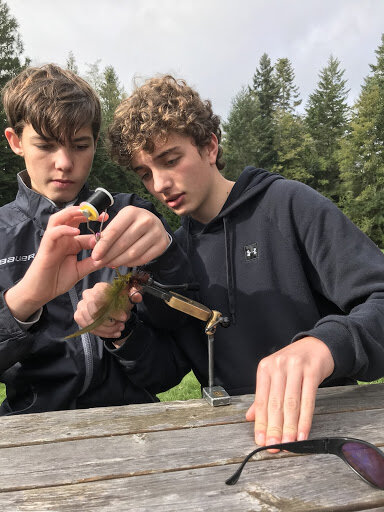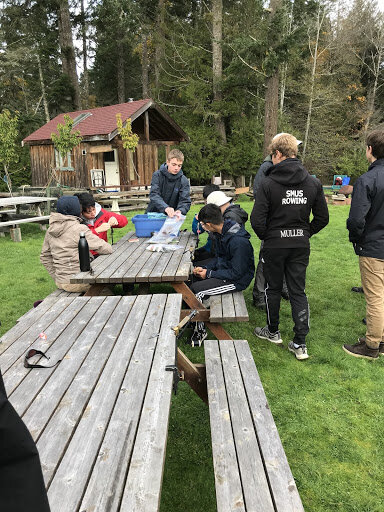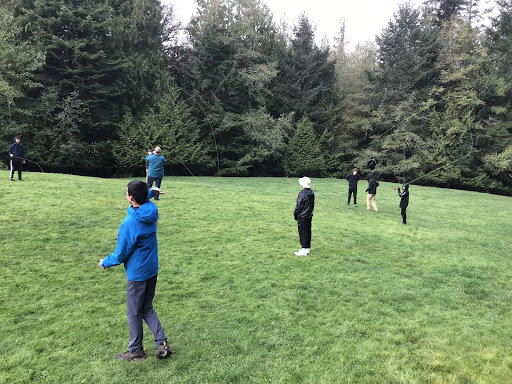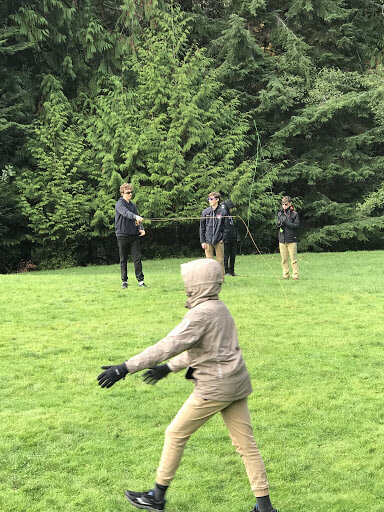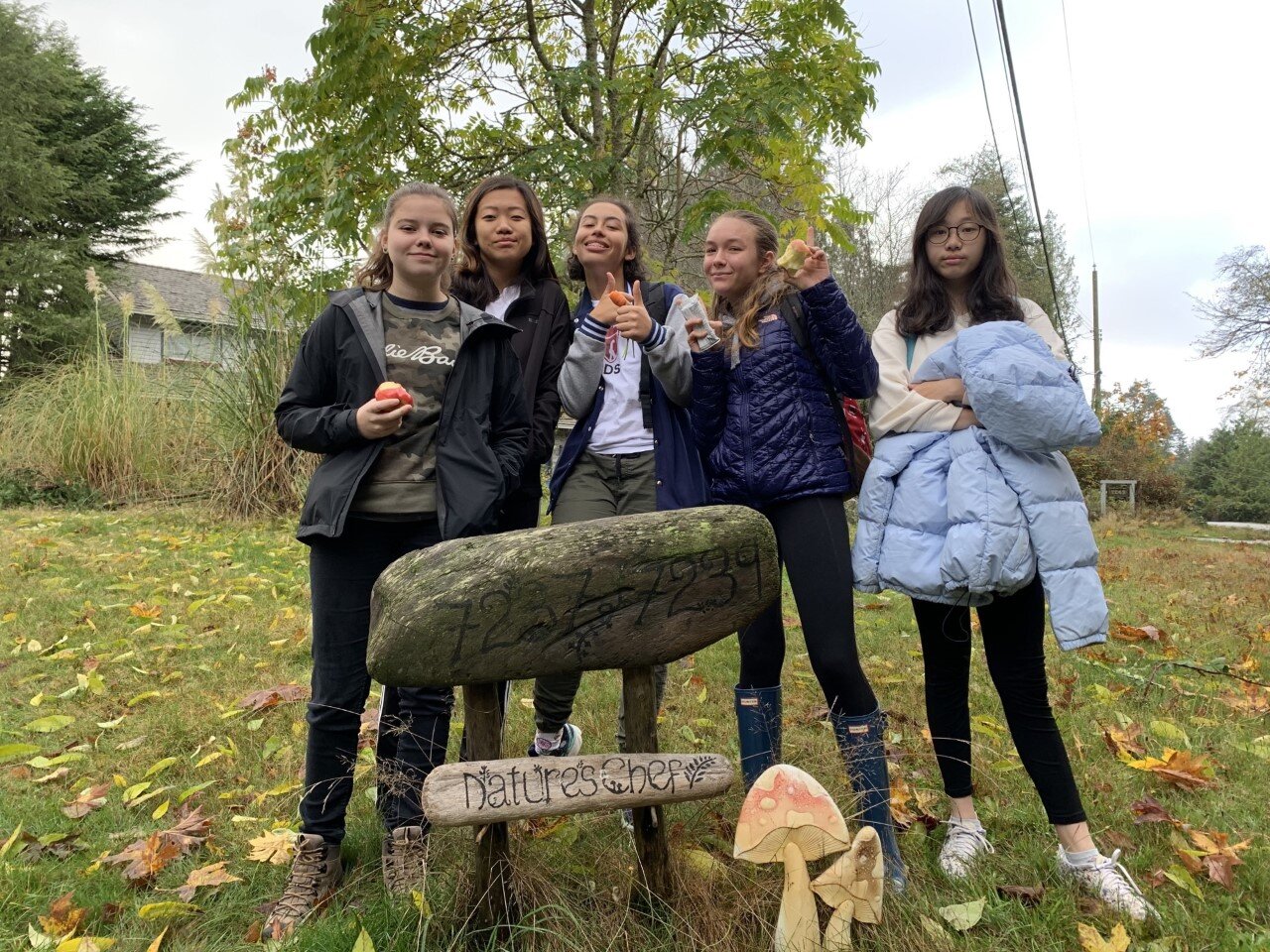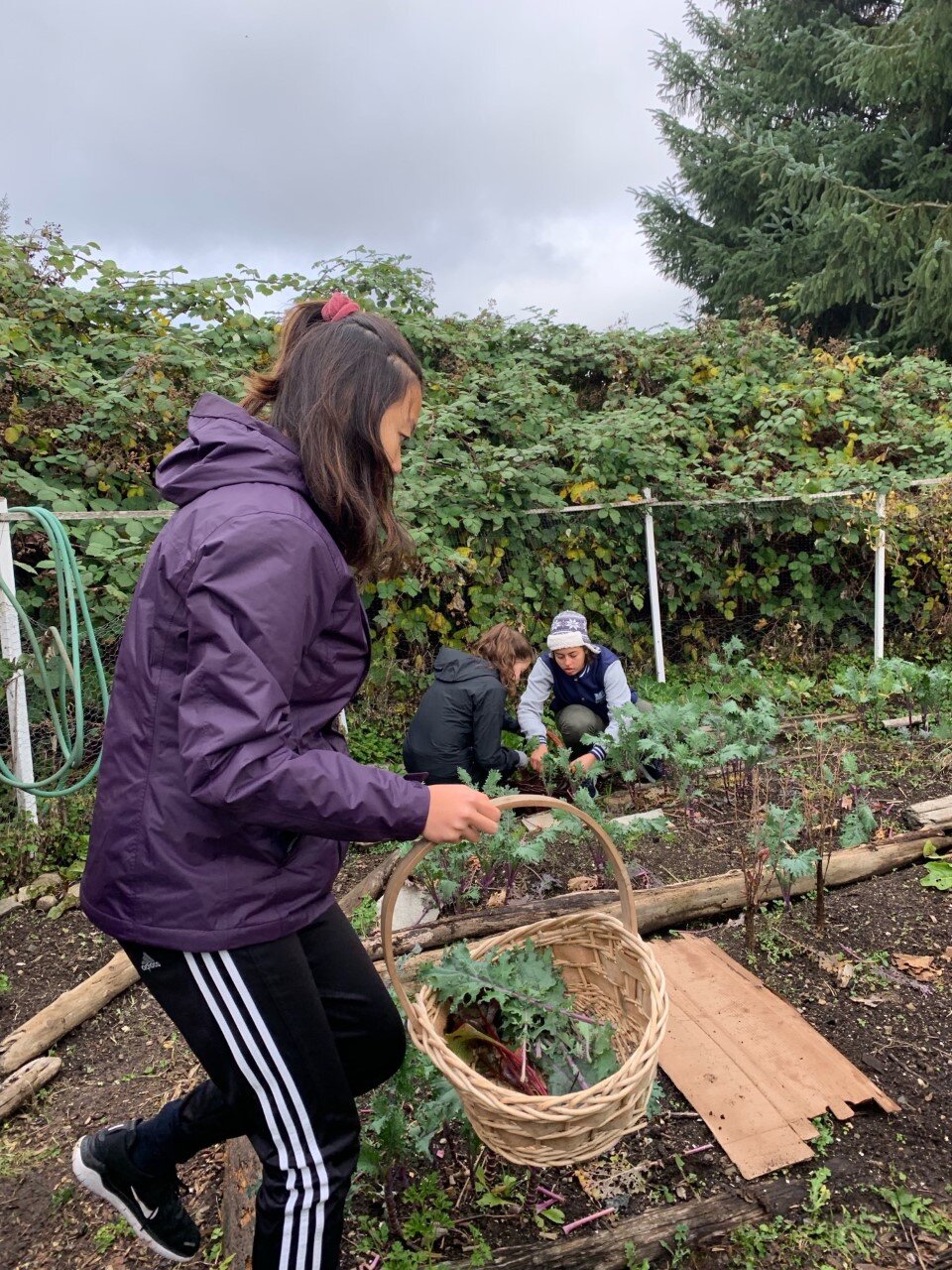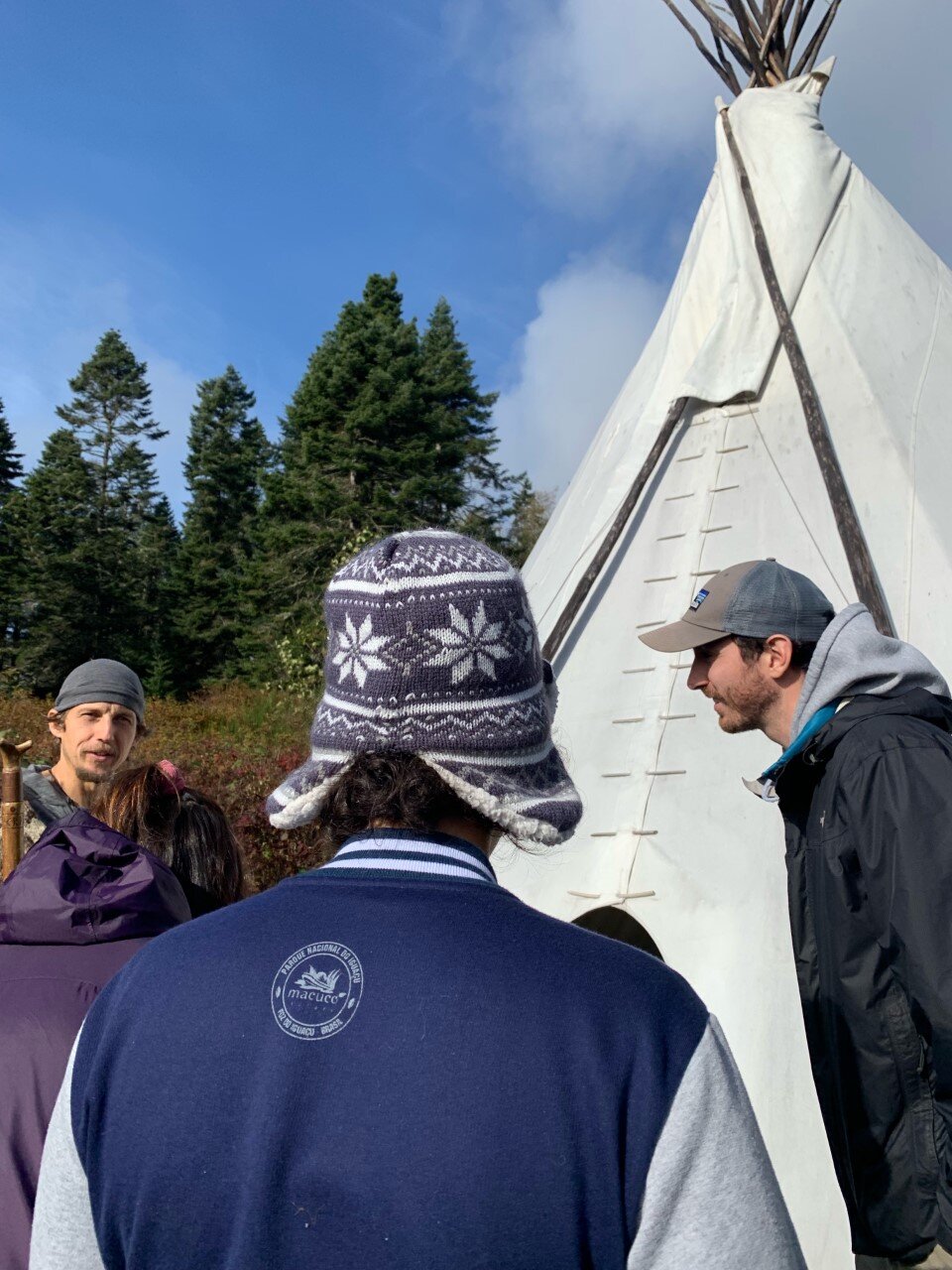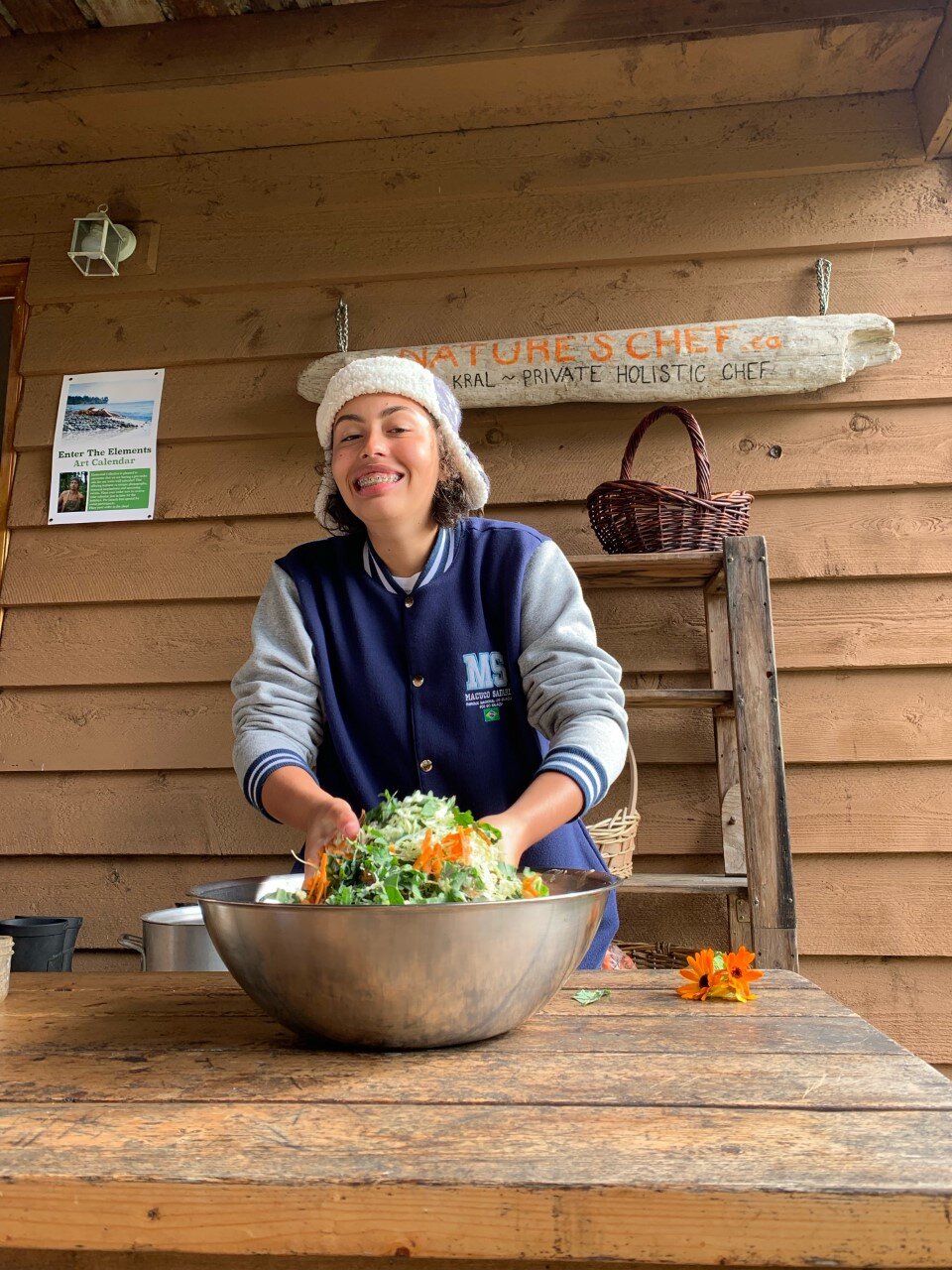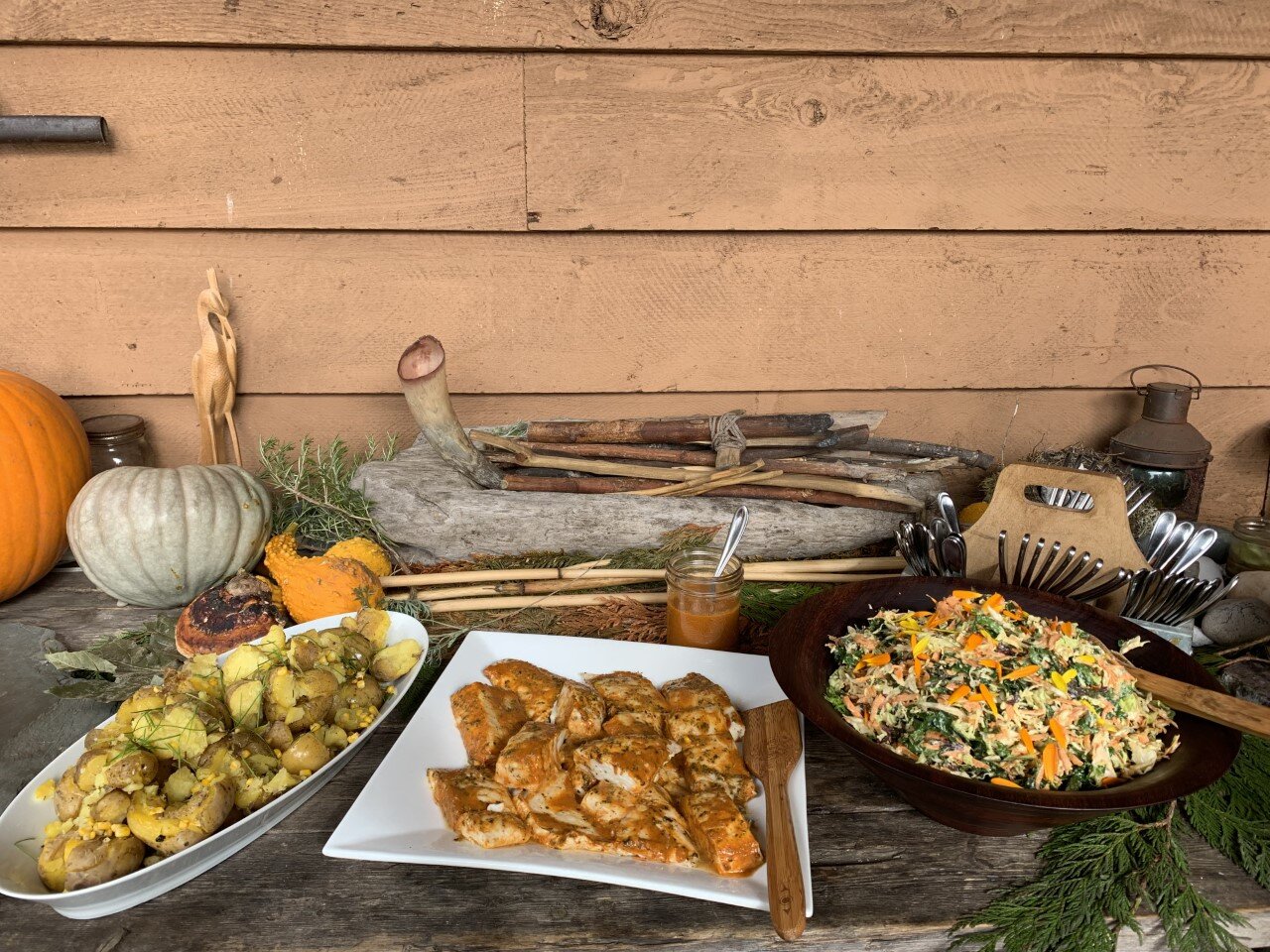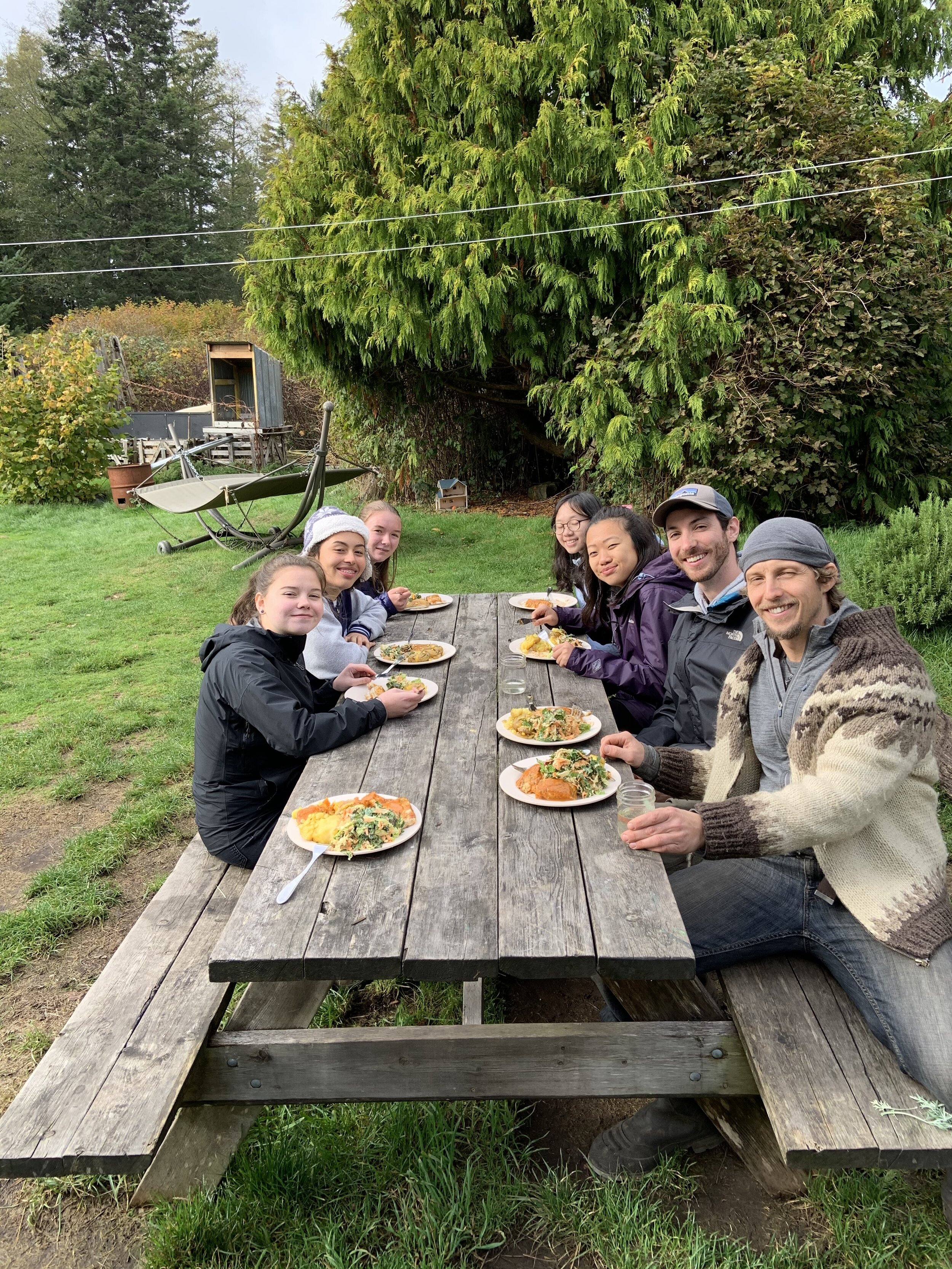Hiking - Words & Photos from Fabian Strasser
We met with the paddling cohort together in the Derby outdoor education building at about 8:30am, where we took a bus to go to Goldstream Park. There we went on a campground and split us in 3 groups. The first one learned all about First Aid, the second one about making fire and hunting and the third group all about building a shelter from tarps. After 1.5 hours we met again an sat around a fire and ate marshmallows and our lunch. Then we had to built new groups. In each group one or two from each "learning" group. Then the challenge started. The teachers prepared a situation. One of each group has a broken arm. Then we had to built a tarp, hunt animals and make a fire. It was a very fun competition and an engaging way to learn the skills we will use through the year in the Ridgelines & Coastlines cohort. Then we went down to the Goldstream and watched the salmon, which were spawning upriver. After about 1 hour the bus picked us up again. Let's say it was an amazing time and we enjoyed it a lot!
Paddling - Words & Photos from Owen Vincent
Day two of the Ridgelines to Coastlines paddling cohort was full of successes. We began the day being ready to leave at 8:30 from Derby. Having found adequately warm (and waterproof) gear we set off with the hiking cohort to GoldStream Park, wherein we would complete a cold yet eventful day of learning various survival skills.
Only roughly 5 minutes out from the campsite wherein we would be setting up for the day we began to see a wet mixture of slush and snow covering a few of the fields surrounding the road. Upon arriving at the campsite we carried our supplies for the day and were split into three groups of five, which would later become our “survival scenario” group. Between the five of us we were split yet again into three main skill learning groups: “hunting” and fire building, First Aid and navigation, and finally Shelter building. The morning was spent soaking up information from our excursion leaders, Mr. Pope, Mr. Mcleod, and of course Mr. Doland’s nearly successful throwing technique.
We then took a break for lunch at roughly 11:30, around the roaring fire created earlier in the day by the fire building group. Hot chocolate, Marshmallows, and other roasted items warmed us up before our afternoon “survival challenge”.
Each group of five was given the essentials for making a fire, a shelter, a sling, and for following directions to an “emergency phone location”. After quickly making a sling for the “injured” person in each group we quickly began to make our shelter. Which was promptly put to a “rain test”, wherein a bucket of water was tossed on our shelters, while we stood under them. Upon completing this test, we rushed over to our fire pit to begin splitting wood into kindling, and tearing apart cedar bark to act as a fire starter. Upon making our fire we rushed over to “hunt”, having successfully hit a stuffed animal we were on to our last challenge. We were given the compass bearing to follow in order to find our emergency phone. Upon finding it, we made an accidental call to the Oak bay optometrist, resulting in only slight confusion when we told them our emergency scenario. Nevertheless, we were able to successfully complete our call, making our group the fastest to complete all the challenges.
On the whole the day was incredibly eventful, and educational. We learnt a whole variety of hard skills which could and will likely prove useful on our end year excursions.




























































































